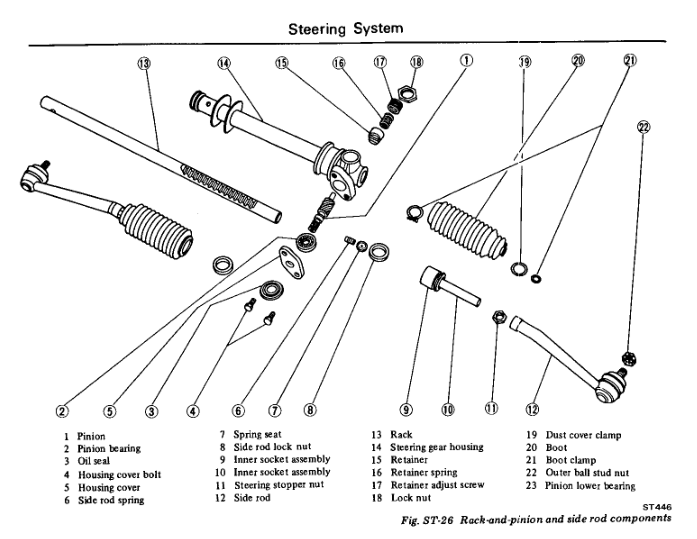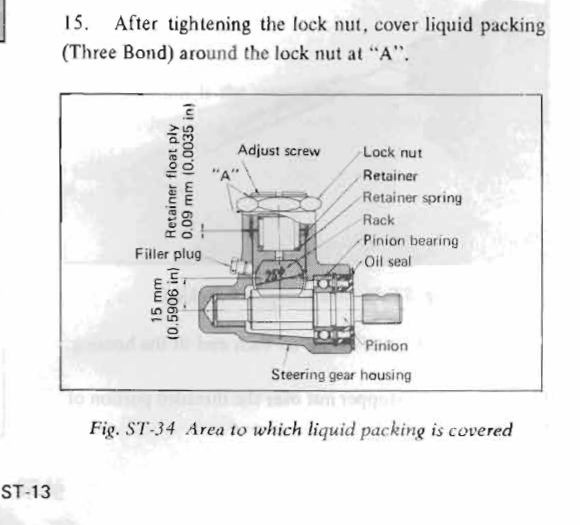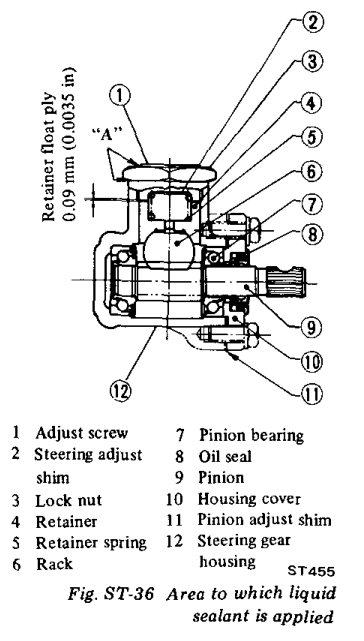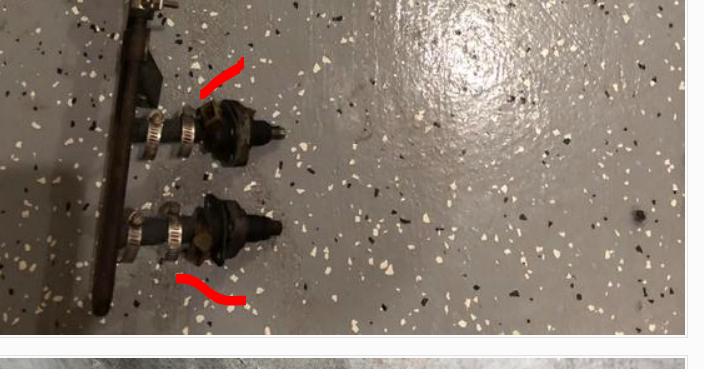Everything posted by Zed Head
-
need help car starts but will turn off after a few secs
When I first read your post I got kind of distracted by the 79 reference and overlooked the 1975 part. Even though I copied a 1975 wiring diagram to my reply. Your problem sounds like the fuel pump contact switch in the AFM is opening, due to low air flow through the AFM. It's a common problem. Could just be that it's running poorly and idle speed drops too much, or you have vacuum leaks in the AFM hoses or hoses to the intake manifold. All of the hoses connected to the intake manifold and valve cover need to be connected and leak-free. Even the oil filler cap and dipstick tube. No air leaks in to the engine. It's hard to grasp if you're used to working on carb'ed cars. If you want to try to keep it running so that you can diagnose those problems, try opening up the idle speed screw to draw more air through the AFM. If you want to get a quick check of the AFM fuel pump contact switch, either locate it in the AFM and put a jumper wire on it or have somebody hold the AFM wright open so that the switch stays closed. The switch is tiny but you can actually see a tiny spark when it makes and breaks contact. I think that that is your problem. Here's a link and a picture from it. From 240260280's work. http://atlanticz.ca/zclub/techtips/afm/index.html
-
Engine crank no start
Download this file and go to pages EF-16 and EF-37. Then read all of the other pages too. You should have seen power while at Start, cranking. Make sure you have the plug wires on correctly. Counterclockwise rotation. People (me) have got it backwards. http://www.classiczcars.com/files/file/24-1978-280z-factory-service-manual/ Here's a wiring diagram - http://www.classiczcars.com/files/category/1-wiring-diagrams/
- The Trans-America Challenge 2018
-
1972 240Z Sells for $37K at Barrett-Jackson Auction
I live in the Portland Oregon metro area, surrounded by tech professionals with nostalgic memories, some of their own times and some of their parents. They're all rich. The 280ZX's were both 2+2's. Not that there's anything wrong with that.
-
Worn out key re-cut
The only good Hagar is Montrose Hagar.
-
Steering Rack Disassembly and Refurb
You have a sample right there. Stick a hot wire in to it and waft some vapors past your nostrils. That's actually an official plastics ID test from the past. Or you can start with a flame - http://www.boedeker.com/burntest.htm Try it. It's fun!
-
1972 240Z Sells for $37K at Barrett-Jackson Auction
Actually there's several Z's and ZX's. Use your page search function on this list - http://www.barrett-jackson.com/Events/Event/Docket/Scottsdale-2018/Collector-Cars/93f04d0d-614b-4e1c-b4ca-c87d88b709c4/01-13-2018/01-21-2018#213213 CTRL F
-
1972 240Z Sells for $37K at Barrett-Jackson Auction
And a 77 - http://www.barrett-jackson.com/Events/Event/Details/1977-DATSUN-280Z-215552
-
1972 240Z Sells for $37K at Barrett-Jackson Auction
Here's a 73 that sold for $20,900 - http://www.barrett-jackson.com/Events/Event/Details/1973-DATSUN-240Z-213213 Edit - there must have been a glitch because it showed me the price. Now you have to register to see it.
-
Bringing a 1977 Z back life
Looks like the small ones to me... Aspect ratio. Compare to your full kit picture. Don't know... The big ones almost never really need replacing. They're the part that the clamp presses on to seal the small ones. Edit - but it won't hurt to replace them. Unless you stab your finger with the pick you're using to try to peel them off of the injector body.
-
Worn out key re-cut
I've read that it's on the passenger side door lock cylinder. Only the passenger side for some reason. I did like site did and took the number from the glove box door to a local locksmith. They didn't think twice, just looked up the cut in their books and made me some spares. Just went and looked at mine and it's a letter and four numbers. Like A1234.
-
Potentiometer
It's really only meant to get rid of mid-range hesitation or intake firing/popping. At open throttle, the ECU dumps a lot (27%) of extra fuel.
-
Steering Rack Disassembly and Refurb
If the burnt plastic smells like burnt hair, it's probably a thermoplastic nylon.
-
1972 240Z Sells for $37K at Barrett-Jackson Auction
Of course. Interesting that it's actually a "resto-mod". People ask often if they should restore or modify their Z's. Looks like people are paying for the modified cars now. Wheels, PCV system, interior...it's not a restoration.
-
Steering Rack Disassembly and Refurb
Did you poke a wire in to the dimples? Blow some air in and see where it comes out. Is there a rattle inside now? Just asking the things that I'd be doing...
-
need help car starts but will turn off after a few secs
Sounds like really low fuel pressure or the AFM is not connected. Running on cold start valve fuel or dribbles from the injectors. When the throttle is touched it leans out and dies. Could be that the EFI system is not even powered. No injection from the injectors. The CSV has a somewhat separate power supply. Different pin from the EFI relay. hav to get of of the pone and find a compter
-
Steering Rack Disassembly and Refurb
-
Steering Rack Disassembly and Refurb
This has probably been noticed before but the 240Z racks are different from 280Z. Y'all 240Z people have a filler plug
-
1972 240Z Sells for $37K at Barrett-Jackson Auction
Weird that "restored" doesn't really mean restored. Maybe people think it's just a descriptive word like nice or clean. Nice car though.
-
Hesitation during acceleration
Weak spark or module breakdown are possibilities. Usually the modules overheat and start acting weird until you let them cool down. But, maybe yours is on the edge. Module problems are hard to diagnose. One thing often overlooked on the the ignition system is the need for a really solid ground. The coil "charge" is totally dependent on current. High energy coils are really more high current coils. The ZX module grounds through the distributor body. Poor grounding could limit current and make for a weak spark at higher RPM. Maybe add a dedicated ground wire (another one actually, there's supposed to be one there already) to the distributor mount.
-
Steering Rack Disassembly and Refurb
Then what happened? Are the holes through-holes or divots? Any parts get loose?
-
Potentiometer
Did you measure resistance across the terminals? Should have been about zero at one end of the rotation. And did you solder two terminals together as one leg of the circuit? I don't think that you need to do that. Just measure resistance across two terminals that show zero and a higher number,with knob rotation, and use those two for the circuit. We're not really using it as a potentiometer, it's really a rheostat. http://www.resistorguide.com/rheostat/
-
Bringing a 1977 Z back life
The injectors are designed to work with no clamps. The barb locks the hose on. There's a full procedure shown near the end of the Engine Fuel chapter. They just press on, it's easy. 5/16" hose. Edit - they actually used too many clamps, marked in red. They are the bad kind though, so better clamps for the rail connection is a good idea. Before you install the injectors it might be worthwhile to flow test them. Connect the hoses and electrical and power the injectors. Compare the volume of fuel from each.
-
L28 280Z Car engine problems!!!
Don't assume that it's off by "180". There's nothing special about 180 degrees. The tang and slot are meant to fit only one way even though they look like they could go 180 off. You'd have to force worn parts together to do that though. If you removed the oil pump, it's more likely that you installed it a gear tooth or two off. It's super easy to check though. Set the timing mark on about 10 degrees on the compression stroke and see where the rotor is pointing.
-
I hate Chinese "Metal"
My point, as it always has been, is that people like you are focusing on the wrong target. You're getting played for suckers by the manufacturers selling you cheap dangerous products. If you don't want Made in China, then don't buy the parts. When you're buying your new Nissan tell the salesperson that they're going to need to replace the jack before you buy the car. Send Nissan a letter describing how their jack fell apart and almost injured somebody. The law requiring country of manufacture to be clearly ID'ed on products was passed for people like you. But you're not using it. Where's the picture showing that the rusty rotor was made in China? You don't even know, you just use China as the foil for all of your frustrations with the world. Then try to bring others in to start a session. Post that picture or some evidence that the rotor was Made in China.











